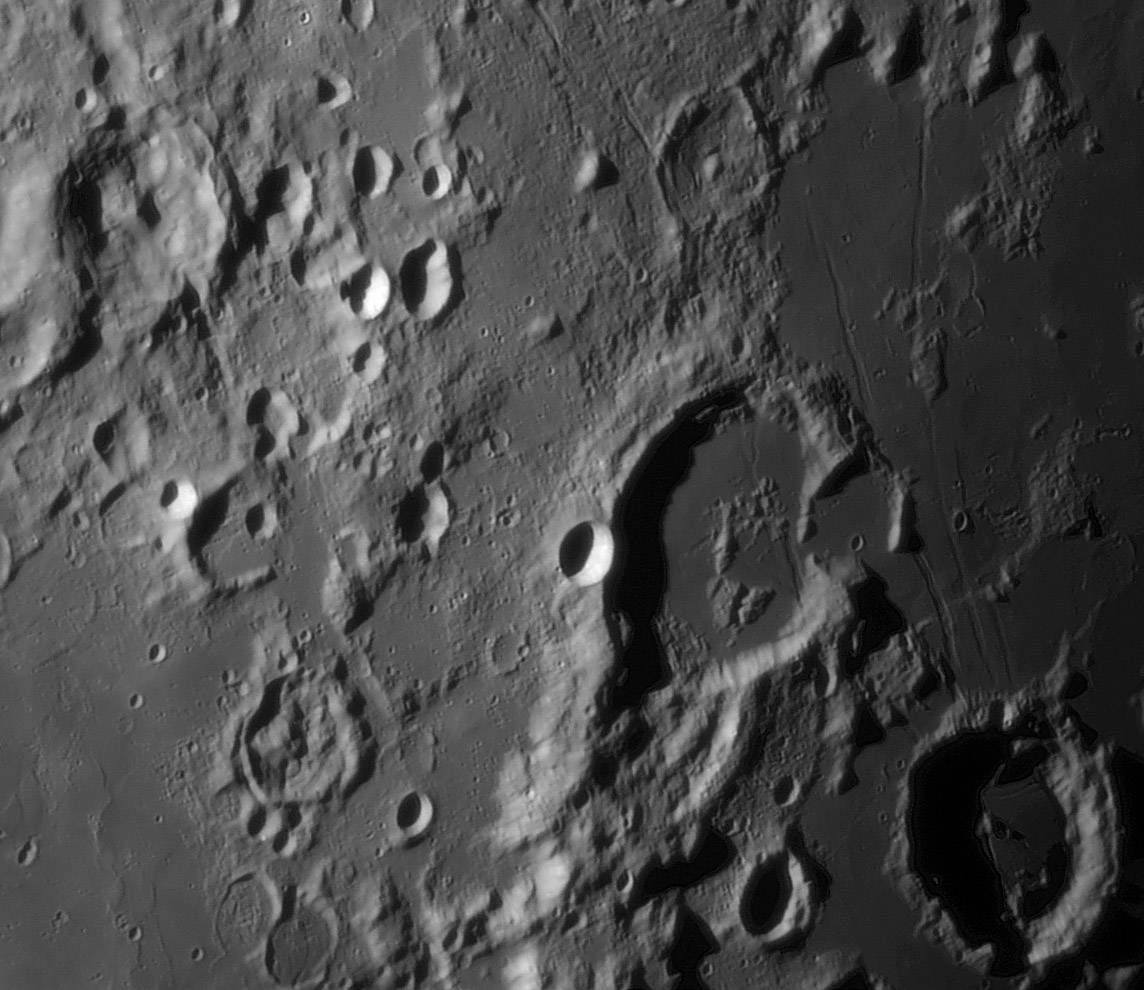October 26, 2008
Rille Cut

image by Wes Higgins, Oklahoma
Craters can be degraded by erosion and burial by ejecta and lava flows. But the craters in this image of the northeast sector of the Nectaris Basin have been lanced by rilles. Gutenberg, the 74 km wide crater at center-right, is cut by one of the Goclenius Rilles that also cut Goclenius (bottom right) and nearby Mare Fecunditatis. It is surprising that only one of the three parallel rilles in Fecunditatis continues on the floor of Goclenius; Is the lava there younger than that in the mare? At top-left is Capella, one of the most famous cut craters. But it is not a rille that slices across Capella, it is a crater chain. The chain is approximately radial to the Serenitatis Basin, but it would be surprising if that old basin was the source. Finally, there are two other bizarre craters here because of the material inside them. Gutenberg G (above Gutenberg) seems to be filled by ejecta with only the rim and central peak visible. And Gaudibert - bottom left) is full of chunky blocks that must be ejecta but doesn't look like it.
Chuck Wood
Technical Details
09/18/08. 18" Reflector + Infinity 2-1m camera, MAP -161X64, stack of 121 frames.
Related Links
Rükl plates 47 & 48
Yesterday's LPOD: Why Here?
Tomorrow's LPOD: A Photographic Rukl
COMMENTS?
Register, Log in, and join in the comments.



